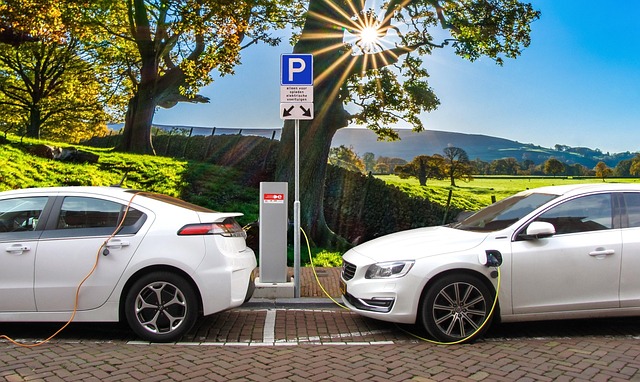Looking to register your car in California? This comprehensive guide walks you through the entire process, from understanding crucial requirements to securing your license plate. We break down the essential steps, including gathering vital documents and performing a step-by-step DMV VIN verification. By following these clear instructions, you’ll be on your way to a smooth and efficient car registration experience in California.
- Understand California Car Registration Requirements
- Gather Necessary Documents for Registration
- Perform DMV VIN Verification Step-by-Step
- Complete and Submit Your Registration Application
- Pay Car Registration Fees and Obtain License Plate
Understand California Car Registration Requirements

Before registering your car in California, it’s crucial to understand the state’s specific requirements. The California Department of Motor Vehicles (DMV) mandates several steps for car registration, including a thorough vehicle inspection. One critical aspect is the DMV VIN verification, where the unique Vehicle Identification Number (VIN) of your car is cross-checked against manufacturer records to ensure authenticity and historical maintenance records.
This process often involves a vin inspection or mobile vin verification, allowing you to have this check performed at convenient locations or even on your doorstep. By fulfilling these requirements, you not only ensure the legality of your vehicle but also play a part in maintaining California’s robust automotive safety standards.
Gather Necessary Documents for Registration

Before you begin the registration process for your vehicle in California, ensure you have all the required documents. The California Department of Motor Vehicles (DMV) requires a range of paperwork to verify your identity and the vehicle’s details. One crucial step is completing a DMV vin verification, which involves checking the vehicle identification number (VIN). This can be done through a mobile vin inspection or by utilizing a mobile vin verifier to ensure the VIN is accurate and matches the vehicle’s make, model, and year.
Gathering these documents is essential to streamline the registration process. You’ll need proof of ownership, typically a title document, as well as valid identification like a driver’s license or state ID card. Additional paperwork may include insurance information, previous registration records, and, in some cases, evidence of vehicle inspection or maintenance records. Having all these ready will save you time when visiting the DMV or completing the registration process online.
Perform DMV VIN Verification Step-by-Step

To begin the DMV VIN verification process in California, gather all necessary documents and ensure your vehicle’s information is accurate. This includes the Vehicle Identification Number (VIN), which can typically be found on a sticker beneath the windshield or on the driver’s side door frame. Next, visit the California Department of Motor Vehicles (DMV) website to access their online services or make an appointment at a local DMV office.
Follow these steps for a successful DMV VIN verification:
1. Prepare your documents and vehicle details. This includes proof of ownership, registration, insurance, and identification.
2. Schedule or walk-in to your nearest DMV location. A representative will guide you through the process.
3. Present your documents and provide the VIN from your vehicle. For a more convenient and faster alternative, consider using a mobile vin verification service, which allows for an online check using your smartphone or computer. These mobile vin verifiers can offer real-time results, ensuring a seamless experience.
Complete and Submit Your Registration Application

After gathering your required documents and ensuring your vehicle meets all California emission standards, it’s time to complete and submit your registration application. This process involves filling out Form SM 4503, which can be done online or in person at a local Department of Motor Vehicles (DMV) office. When completing the form, ensure you accurately enter your vehicle’s information, including its make, model, year, and unique Vehicle Identification Number (VIN).
A crucial step before submitting is to undergo a DMV VIN verification process. This can be done through a traditional inspection at a DMV office or with the assistance of a mobile vin verifier. The latter offers a convenient option where a professional comes to you for a quick and reliable vin inspection. This step ensures that your vehicle’s details match the information on record, streamlining the registration process.
Pay Car Registration Fees and Obtain License Plate

After completing your vehicle’s registration application at the DMV, it’s time to pay the associated fees. These fees vary depending on factors like the type of vehicle and emissions standards. Once your payment is processed, you’ll receive a temporary registration permit and can begin the process of obtaining license plates.
Before heading to a licensing facility, many California residents opt for a convenient alternative: using a mobile vin verifier. This service allows you to conduct a quick and accurate vin inspection right from your smartphone, eliminating the need for an in-person visit. By utilizing a mobile vin verification tool, you can ensure that all vehicle information is up to date with the DMV, facilitating a smoother license plate issuance process.
Registering a car in California involves understanding specific requirements, gathering essential documents, and completing crucial steps like DMV VIN verification. By following these straightforward procedures—from initial application to final fee payment and plate acquisition—you’ll ensure your vehicle is legally registered and ready to hit the road. Remember, proper registration not only complies with state laws but also guarantees safety and smooth driving experiences.
